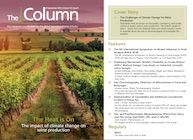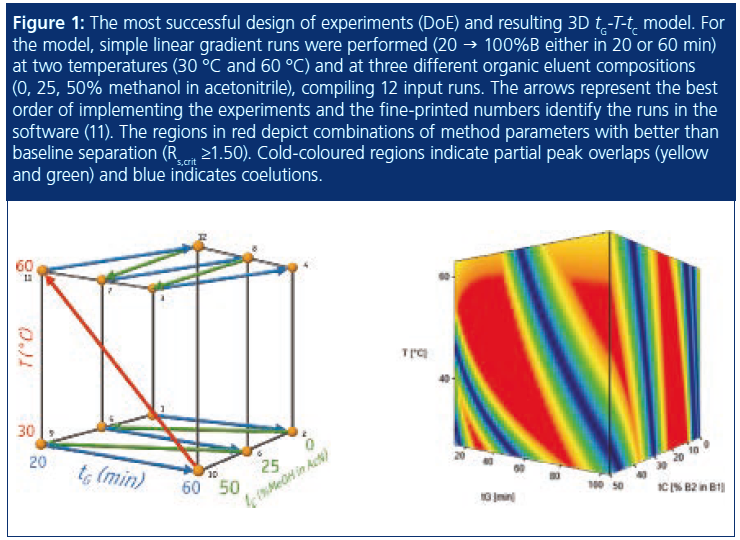The 9th International Symposium on Recent Advances in Food Analysis (RAFA 2019)
The 9th International Symposium on Recent Advances in Food Analysis (RAFA 2019) will take place in Prague, Czech Republic, on 5–8 November 2019. This preview offers a glimpse of what to expect at the conference.
gekkon4ik/stock.adobe.com

The 9th International Symposium on Recent Advances in Food Analysis (RAFA 2019) will take place in Prague, Czech Republic, on 5–8 November 2019. This preview offers a glimpse of what to expect at the conference.
The RAFA organizers, the University of Chemistry and Technology, Prague (UCT Prague, Czech Republic) and Wageningen Food Safety Research (WFSR), part of Wageningen University and Research (The Netherlands), would like to invite food scientists from academia and industry, and representatives of national and international agencies, control authorities, and governmental and commercial laboratories to attend this event. The conference is chaired by Jana Hajslova and Michel Nielen, who are affiliated with the respective organizers.
RAFA has grown since the conference was launched in 2003. Previous events were attended by over 750 participants from more than 60 countries in Europe, Asia, America, Australia, and Africa, and supported by more than 50 sponsors, exhibitors, and media partners.
The RAFA 2019 symposium will provide an overview of contemporary trends in analytical and bioanalytical strategies in food quality and safety control and will discuss challenges and novel approaches in food and natural products analysis. The following areas related to recent and emerging issues will be addressed within the RAFA 2019 sessions: mycotoxins, marine, and plant toxins; migrants from food contact materials; processing contaminants; pesticide and veterinary drug residues; industrial contaminants; allergens, antinutrients; metals, metalloids, and speciation; healthy nutrients and vitamins; flavour significant compounds; QA/QC, chemometrics, and big data handling; authenticity and food fraud; omics in food analysis; food forensics; microplastics in food; novel food bioactives and supplements; organic crops and foodstuffs; human biomonitoring; portable on-site food analysis.
Workshops, Seminars, and Tutorials
The conference programme will be accompanied by several satellite events alongside workshops, seminars, and tutorials on novel analytical strategies, including workshops on “Vibrational Spectroscopy and Chemometrics for the Monitoring of Food and Feed Products and Contaminants Detection”, “Human Biomonitoring in Food Quality and Safety”, “Microplastics in the Food Chain”, and “Portable Food Analysis and Citizen Science”. Other sessions include “Data Quality and Smart Data Handling in Food Analysis” and “METROFOOD-RI: Workshop on Metrology in Food and Nutrition”.
An interactive seminar will discuss “Step by Step Strategies for Fast Development of Smart Analytical Methods”, and will be moderated by Vit Kosek (UCT Prague), Hans Mol (WFSR), and Katerina Mastovska (Eurofins US).
The EU Reference Laboratories Colloquium will include a workshop on “Experiences, Achievements, and Challenges Addressed by EU Reference Laboratories”.
The Food Authorities’ Summit-EU and Beyond will include a seminar from the United States Department of Agriculture (USDA) on “Food Safety Issues Beyond the EU” as well as workshops on “Food Safety in China: Past, Present, and Future” led by the China National Center for Food Safety Risk Assessment (CFSA).
An open day from the EU-ChinaâSafe, Delivering an Effective, Resilient, and Sustainable EU-China Food Safety Partnership, will focus on the latest developments and strategies in food safety and authenticity control and will demonstrate the best practices for a joint EU-China food safety control system. Showcasing the FoodSmartphone and PhasmaFood projects, RAFA Smart Lab will demonstrate smart analyzers and applications for on-site testing of food quality and safety. Another session will discuss the collaboration challenges within the EU framework programme for research and innovation.
Vendor Seminar and Exhibition
Vendor seminars provide the opportunity for leading companies to introduce recent instrumentation and analytical strategies for advanced food quality and safety control. An exhibition of modern instruments, laboratory equipment, reference materials, and consumables used in food analysis will be an important part of the symposium.
Young Scientist Opportunities
A platform for young scientists will be offered to present their scientific work; typically, 20% of the contributed oral presentations is assigned to the next generation. RAFA 2019 Student Travel Grants have been provided. The best poster presentation(s) by a young scientist(s) will be awarded with the prestigious RAFA Poster Award and sponsored poster award(s).
In summary, RAFA 2019 will offer a high-quality scientific programme with top-quality presentations followed by stimulating discussions, a series of satellite events, a large state-of-the-art exhibition, and an attractive social programme. Scientific contributions will be presented by leading scientists through keynote lectures and by contributed oral and poster presentations. The RAFA 2019 programme will be tailored to provide a lot of opportunities for networking as well as exploration of the latest results of the food analysis community.
More details can be found on the RAFA 2019 website: www.rafa2019.eu
For further details please e-mail the organizers at: RAFA2019@vscht.cz
LCGC Europe will be publishing an Advances in Food Analysis supplement in October, which will feature content that will be discussed at RAFA 2019.

Regulatory Deadlines and Supply Chain Challenges Take Center Stage in Nitrosamine Discussion
April 10th 2025During an LCGC International peer exchange, Aloka Srinivasan, Mayank Bhanti, and Amber Burch discussed the regulatory deadlines and supply chain challenges that come with nitrosamine analysis.













